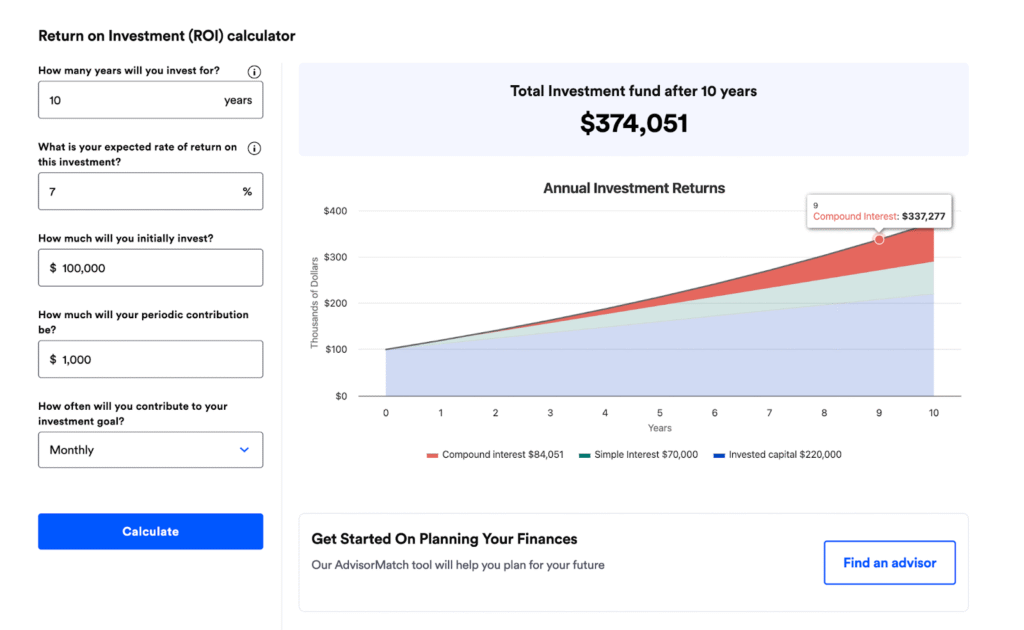Companies aren’t just buying software anymore—they’re buying skills. HR teams, L&D managers, and department heads are actively hunting for online course programs to sharpen their people and boost retention and productivity. In 2023 alone, companies poured roughly $361 billion into upskilling their teams, and analysts predict that figure will soar past $800 billion by 2035.
This surge means that you no longer have to chase massive followings or online fame to grow your business with online learning. Businesses care less about your follower count, and more about the outcomes your expertise can unlock for their teams: better retention, sharper skills, and measurable ROI.
The best way to show these outcomes is through B2B content marketing.
In this blog post, you’ll learn what B2B content marketing is, the best content formats to use, and how Thinkific’s B2B tools can help you sell smarter and scale faster.
Skip ahead:
- What is B2B content marketing?
- Why does B2B content marketing work well for online course sales?
- Why should online educators care about B2B selling?
- Key differences between B2C and B2B content marketing for online courses
- Best B2B content formats for online learning brands
- How to get started with B2B content marketing for your courses
- How to package your courses for teams
- How Thinkific helps you sell your courses to businesses
What is B2B content marketing?
B2B content marketing is the practice of creating and sharing valuable, educational content to attract and convert business buyers. Instead of selling directly to individuals, you’re speaking to decision-makers (e.g., HR leads, L&D managers, or department heads) who are looking for training solutions that can help their teams perform better.
The goal is to build trust by showing you understand their challenges and can deliver measurable outcomes. That means the content you create should focus on solving real business problems, not just promoting your course.
Effective B2B content formats include: how-to webinars, case studies, research reports, templates and checklists, skill-gap quizzes, and pre-recorded product/course demos.
When done well, B2B content marketing positions your course as a trusted solution and shows companies why you’re the partner they’ve been looking for.
Why does B2B content marketing work well for online course sales?
B2B content marketing works well for online course sales because it mirrors how businesses learn and make decisions. Companies aren’t looking for flashy pitches; they want to understand how your training works, what outcomes it drives, and whether it fits their team’s needs. Content like webinars, case studies, and in-depth guides gives them the insight they need to evaluate your offerings with confidence.
It also aligns perfectly with how business buyers evaluate training. Companies want to see proof of outcomes before they invest, whether that’s improving retention, speeding up onboarding, or boosting team performance. B2B content gives you the space to showcase results, share client stories, and walk decision-makers through your approach in a way that builds credibility and trust.
Read: The B2B Leap: Successfully transitioning from selling B2C to B2B
Why should online educators care about B2B selling?
If you’re already creating valuable content for individual learners, selling to businesses is the next logical step. Here’s why:
- You can land larger deals instead of selling one seat at a time.
When you sell directly to businesses, you’re securing training for entire teams, not just a single student. A 50-person leadership team buying your communication course at $200 per seat turns into a $10,000 contract. That’s a deal size many B2C course experts struggle to reach through individual sales alone.
- Each client is worth more over time.
Businesses don’t just buy once—they renew. A company that licenses your course for onboarding may come back the following year for team leads, then for managers. And if your course helps them hit internal KPIs, they’ll likely expand usage across other departments.
- You can build predictable revenue through subscriptions and licenses.
B2B buyers often prefer annual licenses or multi-year contracts because they want stable, long-term training solutions. That stability benefits you, too. With recurring revenue, you can forecast income, invest in improving your content, or hire support—all without wondering where your next sale will come from.
- You spend less on marketing to earn more.
In B2C, every sale often means a new ad or a new email funnel. With B2B selling, one successful deal can ripple across a company. A single HR manager can refer you to multiple departments or introduce your program to the L&D lead at their next company. Your content starts spreading internally, with zero extra ad spend.
- You get closer to your customer’s real needs.
Working directly with businesses gives you high-quality feedback you won’t get from a student review. L&D managers will tell you exactly where employees are struggling and what outcomes they need to see. This helps you build sharper, more in-demand content and gives you insight into creating new programs companies will want to buy.
- You unlock growth without needing influencer status.
In the B2C world, scaling often means building a significant following or churning out constant content to stay visible. In B2B, growth comes from deeper relationships, not broader reach.
You don’t need to go viral; you need to solve a real business problem well. That one solution can serve 10, 100, or 1,000 learners inside an organization.
Key differences between B2C and B2B content marketing for online courses
To succeed in B2B selling, online educators need to adjust how they think about selling. While B2C content focuses on personal appeal and quick wins, B2B content is about building trust, proving value, and influencing multi-person decisions. Here’s how the two approaches differ:
| B2C content marketing | B2B content marketing | |
| Buying process | Purchases are often quick and emotion-driven. A person sees a course, feels inspired or curious, and makes an instant purchase. | Buying is slower and more deliberate. It typically involves multiple stakeholders/decision-makers who need to align before approving a purchase. |
| Content focus | The content is usually aspirational and benefit-driven. It taps into emotions, lifestyle upgrades, personal transformation, or learning made fun. | Content focuses on business outcomes. It needs to demonstrate how the course solves specific organizational challenges. |
| Decision criteria | Price, ease of use, individual needs, and emotional appeal are top motivators for B2C buyers. | Businesses prioritize value, effectiveness, scalability, and alignment with strategic goals. |
| Common formats | Popular B2C content types include YouTube tutorials, Instagram Reels, TikTok videos, email offers, and personal storytelling posts. | B2B buyers respond better to case studies, whitepapers, webinars, ROI calculators, comparison guides, and downloadable solution sheets. |
| Tone and style | The tone is often casual, relatable, and personal. Educators speak directly to the learner as an individual. | The tone is professional, clear, and authoritative. Messaging is tailored to job roles, responsibilities, industry pain points, and company goals. |
| Sales funnel | B2C funnels are short. Someone can discover a course and buy it within minutes or a single ad click. | B2B funnels are longer and involve multiple steps—awareness, initial interest, internal discussions, trials or demos, and purchasing approvals. |
| Metrics | Success is measured by course sales, course completions, email signups, community growth, and reviews. | B2B performance is measured through ROI, employee performance, retention impact, team-wide adoption, and renewal rates. |
Best B2B content formats for online learning brands
Let’s take a further look at each of the content formats that resonate with B2B buyers and how to use each one effectively.
- Landing pages with business-specific messaging
A landing page is often the first real “conversion moment” for a B2B prospect. So instead of focusing on individual goals, like gaining confidence, switching careers, or earning more, a B2B-focused landing page must show business impact.
For example, instead of “Master the Art of Public Speaking,” a B2B landing page would say, “Train Your Managers to Communicate with Confidence Across Teams, Clients, and the Boardroom.” The value shifts from personal transformation to business-wide performance.
Tips:
- Highlight business outcomes: Use headlines that tie your course to measurable results like retention, onboarding speed, or team performance.
- Include a section just for teams: Add a callout or dedicated module like “Train your team” or “Licensing for companies.”
- Make purchasing easy: Offer bulk pricing, licensing tiers, or a “Book a Call” CTA for enterprise buyers.
- Use social proof from companies, not just individuals: If available, feature logos, quotes, or case studies from other businesses that have used your course(s).
- Tailor the messaging to decision-makers: Address pain points that matter to HR, L&D, or department heads, like time savings, performance improvements, or reduced turnover.
Read: 15 Call to Action Examples That Convert (and How to Replicate Them)
- Case studies
Unlike testimonials, which often focus on how a learner felt, B2B case studies are story-driven breakdowns of a specific business problem, your solution, and the measurable results. They help buyers answer questions like: Does this course actually work? Will it work for a team like mine? Is this a safe investment?
A B2B case study should cover:
- The company or team’s challenge (e.g., slow onboarding, poor team communication, high turnover)
- Why they chose your course/solution over other options
- How they implemented it across the team
- Specific, measurable results (e.g., “cut ramp-up time by 30%,” “increased sales rep performance by 15%”)
- Quotes from a decision-maker, ideally from department head(s)
- Bonus: internal metrics or feedback from learners that reinforce impact
Alternative: Video-based case studies
Video case studies can be quicker to consume, easier to share during internal meetings, and more persuasive due to the emotional weight of a real person talking about their experience.
Tips for video case studies:
- Keep it short (2–3 minutes max): Focus on a single challenge and result to avoid overwhelming the viewer.
- Feature the right spokesperson: Ideally someone in a leadership or training role who had authority in the purchase.
- Use a clear narrative arc: Problem → Why they chose you → What changed.
- Add captions and branding: Make it professional and accessible even when muted.
- Break it into clips: Use 30-second cuts for LinkedIn, emails, or quote cards.
- Close with a strong CTA: End with something like “Want similar results? Let’s talk” or “Book a team training consult.”
- Thought leadership blog posts (aimed at managers or execs)
Thought leadership blog posts allow you to tap into your real-world experience and show your audience that you understand industry trends, emerging challenges, and what today’s business leaders struggle with.
For instance, a B2B blog might explore “Why High-Growth Teams Fail Without Soft Skills Training” or “The Real Cost of Poor Onboarding in Distributed Teams.” These posts help execs connect your course with their larger business objectives.
💡Tips:
- Write for decision-makers: Frame your ideas around team outcomes, KPIs, and leadership priorities, not personal motivation.
- Use industry language and data: Reference reports, benchmarks, or trends that lend credibility and speak their language.
- Include practical takeaways: End with tips, frameworks, or mini-assessments so readers see your course as the next logical step.
- Link to deeper content: Guide readers toward case studies, webinars, or your enterprise landing page.
- Publish on multiple platforms: Share on LinkedIn (personal and company page), Medium, and your own blog to reach different segments of your audience.
- Digital downloads
While a B2C buyer might buy your course based on a good sales page, B2B buyers want something they can forward to their team, print for a meeting, or use to pitch internally.
Downloadable content, like lesson plans and training guides, is easy to share and gives your audience more information about your course.
Tips:
- Design it for internal sharing: Use clear headings, charts, and bulleted summaries so others can skim and get the value.
- Make it brand-aligned and professional: Use logos, consistent fonts and color schemes, and polished visuals in your digital downloads.
- Offer multiple formats: A one-pager, full training guide, and an overview deck give buyers options depending on their internal process.
- Gate the content strategically: Use your digital downloads to collect emails of warm leads who are further down the funnel.
- Include business-facing outcomes: Frame the content around what the business will gain, not just what the learners will experience.
- Interactive tools (e.g., skill gap quizzes or training needs assessments)
Interactive tools are self-service resources that help B2B buyers diagnose a problem before you pitch the solution. These tools invite the prospect to input their own data (team size, performance metrics, common challenges) and generate customized insights or recommendations.
Examples include:
- “Is Your Sales Team Ready to Close in Q4?” Assessment
- “Soft Skills Readiness Quiz” for new managers
- “Employee Onboarding Health Check” for department heads
Tips:
- Keep the experience short (3–5 minutes): Ask 5–7 well-crafted questions that get to the core of the business issue.
- Provide clear, personalized results: Display a results page that outlines their score, training gaps, and next steps.
- Match each result to a solution: Tie specific score ranges to different versions of your course or offers (e.g., “You scored 4/7: Start with our foundational leadership training.”)
- Gate the results strategically: Ask for a name and work email before showing the full report; this helps you collect and qualify leads without adding friction.
- Use the data to trigger segmented emails: If a lead scores low on a particular skill, send a follow-up email with targeted content and a relevant offer.
- Webinars for teams
A webinar lets you demonstrate your expertise live by answering questions, showing your teaching style, and giving buyers a sample of what it’s like to learn from you.
You can host a public webinar based on your course, interview industry experts, or speak at a virtual conference. The goal isn’t to convert immediately; it’s to educate buyers, build credibility, and spark internal discussions.
Tips:
- Choose a specific, outcome-oriented topic: Titles like “How to Reduce Ramp-Up Time for Remote Teams” work better than general topics like “Better Communication Skills.”
- Use real examples and metrics: Share a before-and-after from a past client or use data to frame your teaching points.
- Record and repurpose: Edit the replay into short clips for social, use it as gated content, or turn it into a blog post.
- Include a CTA at the end: Offer a free consultation, a team assessment, or access to a downloadable guide.
- Internal pitch decks or buy-in kits
According to Gartner, the average B2B enterprise buying group comprises five to 11 stakeholders. This means even if your course excites a training manager, they still need to win over a director, CFO, or legal team. An internal pitch deck or buy-in kit gives them the tools to do that.
It:
- Equips your internal contact with the right language, data, and positioning
- Speeds up the approval process and avoids delays due to unclear information
- Shows that you know how to work with businesses (which builds trust)
💡Tips:
- Use slide formats, not dense text docs: Decks are easier to present during team or budget meetings.
- Include key slides:
- Overview of your course or curriculum
- The business problem it solves
- Key outcomes and ROI examples
- Case studies or metrics from other companies
- Licensing or pricing info
- Implementation timeline
- FAQs (security, data privacy, integrations, etc.)
- Add their logo and tweak the copy for their audience: Make it easy for them to “own” the deck internally.
- Pair the deck with a one-pager: Some decision-makers just want the snapshot—include both.
- Offer to walk them through it: Set up a quick call where you guide the decision-maker on how to present the pitch.
- ROI calculators
While individuals often buy based on emotion or personal value, B2B buyers need financial justification. An ROI calculator makes that decision easier by showing potential gains in black and white.
Let’s say your course improves onboarding for remote employees. A calculator that lets an L&D manager plug in “20 hires x 2 weeks faster onboarding = $X saved” makes the cost-to-value ratio clear and shows you understand the business case behind your offer.

Tips:
- Tie the numbers to real business outcomes: Frame ROI in terms of time saved, cost per employee, or retention gains.
- Keep the inputs simple: Ask for a few key numbers (like team size or hourly wage) and do the rest behind the scenes.
- Embed the calculator on your B2B landing page: Don’t make them search for it. Place it near testimonials or case studies.
- Pair the tool with a CTA: After they calculate value, prompt them to book a demo, download a team guide, or get a quote.
- Mini demo videos
A mini demo video gives buyers a quick, clear look into your course; it shows your teaching style, course design, and how learners engage with the content. It’s especially useful for busy decision-makers who don’t want to sit through a full sales call but still need to see what the course actually delivers.
Tips:
- Keep it under 3 minutes: Focus on one lesson or concept, not a full overview.
- Choose a strong, relevant excerpt: Pick a module that speaks to a specific business challenge (e.g., “Giving Effective Feedback” for leadership training)
- Narrate or guide the viewer: Add a short intro or captions explaining what they’re seeing and why it matters.
- Host on a clean, distraction-free page: Use a dedicated landing page or private link, not YouTube with random suggestions.
- Use it in outreach and sales: Embed the video in email sequences, include it on your enterprise sales page, and mention it in follow-up conversations.
- Add a CTA after the video: Suggest the next step: “Ready to explore team pricing?” or “Book a walkthrough for your org.”
How to get started with B2B content marketing for your courses
Making the shift to B2B content marketing doesn’t require starting from scratch. Instead, build on what you already know/have and reorient your strategy to speak to business buyers. Here’s how to lay the groundwork for a B2B content engine that attracts companies, not just individuals.
- Define your ICP.
If you try to speak to everyone, you’ll resonate with no one. To prevent this, create an Ideal Customer Profile (or ICP)—a detailed description of the type of business buyer who is most likely to purchase your course and see success with it.
A well-defined ICP helps you create content that speaks directly to the needs of your ideal buyer and filters out unqualified leads before they even show up.
Examples include:
- An HR leader who needs onboarding programs that shorten ramp-up time
- A training manager at a tech company struggling to scale soft skills across remote teams
- A sales enablement lead looking for a repeatable training system to improve close rates
Here are some tips to define your ICP:
- Start with your data. Look at who’s already purchased your course in bulk or asked about team access. These are your warmest B2B signals.
- Interview current or past clients. Ask why they bought, what problems they were trying to solve, and how they evaluated the solution.
- Identify trends in job titles and industries. Are most of your larger buyers in SaaS? Healthcare? Are they mostly HR professionals or team leads?
- Dig into pain points. What challenges do your best clients mention—poor onboarding? Lack of leadership? Low engagement? These are content gold.
- Use LinkedIn to analyze your audience. Look at the job titles of your followers, newsletter subscribers, or webinar attendees. Check if they’re mostly department heads, L&D managers, HR leaders, or part of the C-suite.
- Map the B2B buying journey.
The B2B buying journey is more structured than B2C and usually involves multiple people, more research, and longer timelines. Understanding each stage helps you create the right content at the right moment.
Here are the stages:
- Awareness. The company becomes aware of a skills gap or training problem., They’re not ready to buy yet—they’re just gathering information. At this stage, your content should educate them about their problem and present your course as the best solution.
- Create: Blog posts, industry stats, downloadable checklists, or skills assessments. Focus on naming the problem and offering insights.
- Consideration. The stakeholders start exploring different types of training solutions to see which one is best for their needs. At this stage, your content should explain why they should choose your product instead of your competitors’.
- Create: Comparison guides, ROI calculators, or video walkthroughs of your course.
- Decision. At this stage, stakeholders are evaluating pricing, logistics, and ROI. This is where final approvals happen, so your content should present your course as a no-brainer solution.
- Create: Case studies, pricing one-pagers, onboarding guides, or a short video demo.
- Post-purchase. The buyer needs to successfully implement the course and measure its impact. So, you need content to help them acclimate to your course, navigate its content, and derive value as soon as possible.
- Create: Onboarding materials, follow-up success tips, team usage reports, and reminders for renewal or expansion.
Pro tip: Use a funnel map and content calendar to outline which pieces support each stage and repurpose them across channels.
- Create anchor content
Anchor content is the foundational content that attracts attention, educates, builds trust, and supports your B2B strategy over time, e.g., long-form blog posts, webinars, case studies, and whitepapers.
This content is not meant to convert quickly; it’s meant to warm up decision-makers and position you as the go-to expert in your space.
Here’s how to use anchor content:
- Audit your existing content for B2B readiness. Look through your website, blog, and sales materials. Does your content speak to teams, departments, and company-level outcomes? If not, update it (or create a new version).
For example, if a blog post talks about “becoming a better leader,” create a B2B version (or update it): “How Team Leaders Can Drive Retention with Empathetic Management.”
Do the same across all your content pieces.
- Optimize your website and sales pages for B2B buyers. Once you start creating B2B content, your site needs to reflect that you’re ready for team deals, licenses, and long-term partnerships.
So include:- A dedicated “For Teams” or “Business Training” page
- Clear messaging around licensing, team access, or bulk pricing
- CTAs like “Book a demo,” “Request team access,” or “Get a custom quote”
- Social proof from businesses: logos, team-based testimonials, case studies
- Content formats that matter to B2B buyers: downloadable one-pagers, ROI calculators, etc.
- Repurpose your anchor content to cover multiple channels. A single anchor piece can be turned into multiple touchpoints. For example, you can use the insights from a webinar to create:
- Social posts that share quotes or stats
- Email sequences that nurture leads through the buying journey
- Video snippets to attract your audience on LinkedIn
- Slide decks or one-pagers for sales conversations
- LinkedIn articles that dive deeper into a strategy
- Build a simple lead capture and nurture system.
Once your content begins attracting interest, you need a system to collect leads and keep them engaged until they’re ready to buy. Here’s how to build one:
- Create a lead magnet like a gated checklist, an ROI calculator, or a free team training audit.
- Connect it to an email platform like Kit (formerly ConvertKit), MailerLite, or ActiveCampaign.
- Offer the lead magnet in your content for free in exchange for an email address.
- Set up an automated 3–5 email sequence that will run when someone signs up for your lead magnet:
- Email 1: Deliver the lead magnet + introduce yourself
- Email 2: Share a pain point and how your course solves it
- Email 3: Show a case study or testimonial.
- Email 4: Offer a free consultation or invite them to a webinar.
- Email 5: Link to your B2B sales page with clear next steps.
Tips:
- Personalize the opening line: Mention the company name or role to show it’s not a generic blast.
- Lead with value, not the ask: Share a blog post, guide, or stat that shows you understand their struggles.
- Use a short, conversational tone: Write like a peer, not a marketer. Avoid jargon and overly formal language.
- Space out the emails: 3–5 emails over 2–3 weeks works well for initial outreach.
- Always offer a CTA: Invite them to reply, watch a demo, or download a team training resource—whatever feels like a natural next step.
- Measure, learn, and iterate.
B2B buyers take longer to convert, and their needs can vary widely across industries and roles. Without regular check-ins, it’s easy to waste time producing content that doesn’t move the needle (or miss opportunities that are right in front of you).
So, here’s what to do:
- Track key metrics like landing page views, webinar attendance, lead form conversions, and email engagement.
- Use tools like Google Analytics, LinkedIn Analytics, or your CRM to see which content leads to qualified inquiries.
- Talk to sales leads or early buyers: What content helped them decide? What was missing?
- Run content audits quarterly: Which blog posts or downloads are converting? Which ones need updating or repurposing?
- Use those insights to refine your ICP, content formats, and messaging over time.
Read: How To Build Your Email Marketing Strategy (Steps & Examples)
How to package your courses for teams
Companies want courses that are easy to roll out, trackable across departments, and clearly tied to performance outcomes. So, as you change your marketing, package your course in a way that supports the experience companies expect.
Here’s how to do that:
- Offer team subscriptions.
Companies rarely buy one seat at a time. They want pricing that reflects volume, team size, or organization-wide access. If you’re still only offering single-user pricing, you’re missing out on deals that could be 10x (or 100x) bigger.
Here’s how CXL, a B2B marketing training company, handles team subscriptions:

How to implement this:
- Create pricing tiers based on headcount (e.g., 5–10 seats, 11–50, 51–200).
- Offer per-user pricing and unlimited-access packages for enterprise clients.
- Include volume discounts to incentivize larger purchases.
- Use language like “Team Packages,” “Department Access,” or “Licensing Options” to make it clear you serve businesses.
- Offer custom quotes or discovery calls for clients above a certain seat count.

- Build in progress tracking and reporting.
Business buyers care about outcomes, and they want proof that their teams are completing the training. You need to show that your course isn’t just valuable, but trackable.
How to implement this:
- Use a platform (like Thinkific) that allows for group analytics and team-based reporting to build your course programs.
- Offer dashboards or downloadable reports that show who completed which modules, quiz scores, and engagement levels.
- Provide team managers with admin access to track employee progress.
- Consider sending automated monthly summary emails or training completion reports.
- Bundle related courses into team learning tracks.
Businesses love structure. Instead of selling one course at a time, package related courses into learning paths that map to key objectives: onboarding, leadership development, communication, DEI, etc.
How to implement this:
- Group 2–3 courses into a “Team Communication Starter Pack” or “Leadership Accelerator Track.”
- Offer certification at the end of a track to boost internal buy-in.
- Frame each track/learning path around a clear business goal (“Reduce turnover,” “Ramp up new hires faster”).
- Include milestone check-ins or mini-assessments between modules to keep teams aligned.
How Thinkific helps you sell your courses to businesses
Thinkific gives you everything you need to grow your online business, whether you’re selling a one-off course, building a full-scale online academy (like Hootsuite Academy), or offering digital downloads, memberships, or personalized coaching.
If you’re ready to sell to companies, not just individuals, Thinkific makes it easy with its powerful, fully integrated B2B selling suite. Here are some features:
- Product Bundles
Thinkific lets you combine multiple products into one offer tailored for businesses. The products can either be of the same type or different types (e.g., courses + communities).
For example, you could:
- Bundle several courses and a private community for one department.
- Create a learning path that moves employees through beginner to expert levels.
- Offer digital downloads (like templates or handbooks) alongside training modules.
- Increase deal size by packaging $99 courses into a $500 enterprise bundle.
Not only does this add value for your clients, but it also gives you more leverage to raise your pricing.
- Groups Feature
Thinkific’s Groups feature makes it easy to segment learners by company, department, or cohort. This is key when selling to multiple businesses, especially when each client needs separate reporting or wants to monitor their own team’s progress.
With Groups, you can:
- Assign students to specific companies or teams.
- Create company-specific packages and pricing.
- Generate group-level progress reports to share with clients.
- Give companies access so they can run reports on their team(s) themselves.
- Filter, segment, and organize enrollments for easy tracking and administration.
- Run bulk actions like importing students or enrolling entire teams at once.
This feature lets you keep client accounts cleanly separated, stay organized, and give every business you work with a more tailored experience.
- Group Orders
Selling to teams used to mean manual invoicing, enrollment spreadsheets, and lots of back and forth. Thinkific’s Group Orders feature (available via TCommerce) removes that friction entirely.
With Group Orders, businesses can:
- Purchase multiple seats of your course/training program in one checkout.
- Assign seats to their team directly through a self-serve dashboard.
- Add more seats anytime, without coming back to you.
And you can:
- Save hours by avoiding manual enrollment and payment follow-ups.
- Set tiered pricing or upsells to increase average deal size.
- Deliver a smooth, professional experience that impresses clients and builds trust.
- Branding
Companies want training that feels like their own. With Thinkific, you can duplicate and customize your course appearance per company, from the colors and logos in the Course Player to personalized content or discussions.
If a client wants an entirely white-labeled experience, you can even create a separate Thinkific site with a custom domain, then copy the course content over. This gives the client full ownership over their experience and makes it easy for them to manage their learners directly.
Custom branding gives your clients a more professional and tailored experience, and positions you as a premium provider.
- Invoicing
When selling to businesses, especially for larger or custom deals, many clients prefer to pay via invoice instead of a typical online checkout. Thinkific’s Invoicing feature lets you send professional, customized invoices and collect payments directly.
With Invoicing, you can:
- Send custom-branded invoices to clients directly from your Thinkific dashboard.
- Automate course access and enrollment as soon as payment is received.
- Consolidate your sales reporting and bookkeeping in one place.
- Offer a more professional buyer experience, especially for companies that require invoices for procurement.
Closing thoughts
Expanding your B2B offerings doesn’t have to mean overhauling your business or drowning in admin. With the right tools, strategy, and systems in place, you can create scalable, high-impact learning products that drive revenue and deliver real results for your clients. Whether you’re just getting started with B2B selling or looking to refine and grow your current model, now is the time to take action.
Download the B2B Selling Blueprint: Get Started

Get the B2B Selling Blueprint
This free guide will show you how to build a scalable, repeatable B2B sales engine using Thinkific’s built-in tools.





